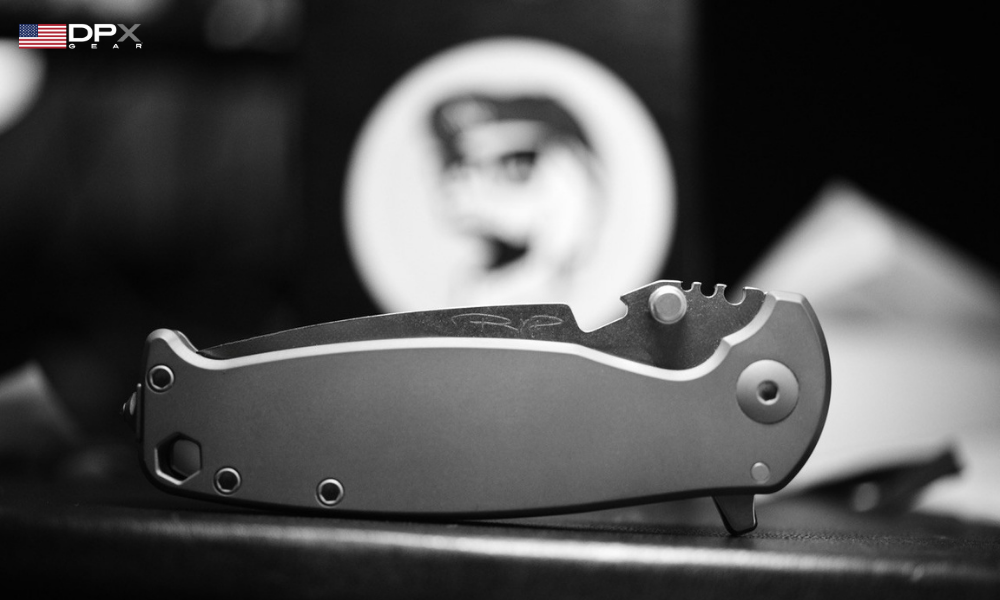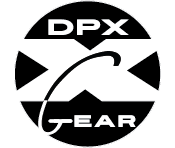
Why Does DPx Gear Use M390 Blade Steel?
DPx Gear uses a select group of steels in the design of our knives. That means the best steel for the task at hand. The 1095 on our HEST Originals with the Shon Rowen heat treat is the ideal survival and remote steel for heavy use and in the field touch ups. Niolox is a little known European sourced powder steel with the sweet spot that SV30 characterizes. Our S35vN Crucible sourced blades in our Urban lineup are a perfect balance of edge retention and fine edge tuning for EDC fans who want 100% American made. Even the lowly Bohler D2 in our classic HEST folders and the new CHOP combines the durability of tool steel with the ability to create a mirror-like polish edge.
Lately we have been migrating our high-end fixed blades and folders towards the ultra premium formulation officially branded Bohler Microclean M390 . Let’s discuss why.
The endless debate on the best steel for knives is popular but often misguided. Every steel has a purpose. From the softest spring steel in an oft-abused jungle outfitter machete to the most exotic or decorative blends found in custom folders that never leave the safe, it is pointless to argue steel without the actual application and customer in the mix.
DPx Gear makes products for people that use them. Every day. That means the longevity and appropriateness and life span of the blade (and the edge dynamics are critical) We do not select steel based price, volume or marketing fads.
DPx Gear is focused on quality and satisfaction of the customer. Is the steel consistent, the Rockwell hardness appropriate for the use, is heat treated correct for the usage and the grind, edge grind and blade thickness correct?
The M390 is called a “super steel” for a simple reason. It combines hardness, purity, edge retention, formulation and exotic elements to meet almost all the criteria for high end hard use folders. It is also ideal in our fixed blades but the cost per pound is significantly higher.
The M390 we source for our products is made by Bohler-Uddeholm. These are two well respected and ancient steel foundries that merged; Bohler from Austria, and Uddeholm from Sweden. It’s Bohler that gets the credit for developing M390 in the 80’s, however. Like many of the high end steels used in knives, the formulation was originally developed for heavy duty industrial use. One of its uses being injection molding. This steel is designed to take abuse constantly over long stretches of time without failing, creating a clean shape of a mold over and over again; all qualities that make it an excellent candidate for our hard use knives. Edge retention and wear resistance of M390 constantly rank at the top of blade steels just behind pure synthetics and exotic blends.
BladeHQ provides a great comparison tool for exploring the characteristics and personalities of various steel blends for knives. You can see that M390 hits the trifecta sweet spot of Edge Retention, Toughness, Corrosion Resistance with a minor sacrifice in Ease of Sharpening. Ease of sharpening is the domain of softer knives but in the hard use, no excuses, pocket folder , EDC category we are sold on M390.


For the full rundown on specs and features of M390, you can read more here: https://www.bohler-edelstahl.com/en/products/m390-microclean/
So what makes it so special? It’s in its unique composition and formation process called pinning grains. Keeping the steel consistent and the grain small. M390 itself, also known as M390 CleanSteel, is made up of a composite of various steels enhanced by Vanadium. M390 is a “third generation” powder steel with high levels of chromium and vanadium that delivers consistency, corrosion resistance and an edge that won’t chip easily. It is not as hard or brittle as some earlier blends but can be finished to a beautiful polish. Yes exotic materials like Vanadium (found in M390) or Niobium (found in our Niolox blades) can add strength, increase edge retention and other features. Just watching any comparison video or reading an in depth test on blade steel formulation can launch months of back and forth on the internet and in forums. But in M390 the Vanadium in concert with the other materials and manufacturing process refines the grain size, strengthens the carbide structure refinement and dramatically increases wear resistance for the edge.
You can see the percentages in the chart below:
|
Carbon |
1.9 |
|
Chrome |
20.0 |
|
Molybdenum |
1.0 |
|
Tungsten |
0.6 |
|
Vanadium |
4.0 |
|
Manganese |
0.3 |
|
Silicon |
0.7 |
Bohler M390 gets to its unique composition by an equally unique process. Instead of the typical production process used for many composite steels (putting the ingredients in an alloy and laying them into flattened sheets), Bohler puts them in a gas-atomizing machine which sprays the melted steel like a type of diffuser. The result? The structure becomes much finer on a molecular level. After this magic curation process commences, it arrives at the chemical composition in the chart. They call this “powder metallurgy”.
Here is a great website by Knife Steel Nerds that can take you deep inside the formulation of various steels. We should also mention that it's expensive to make steel like this. Vanadium is exotic and mined in titaniferous magnetite reserves in South Africa, the Ural Mountains and from Carnotite ores in the Colorado Plateau. The melting point for Vanadium is an impressive 3,499° F and is found in 6 series Titanium alloys. The same Ti6Al4V (note the “V”) material we use to make DPx Gear folder frames. Too much Vanadium can make a steel too hard so that’s where the Chromium carbide comes in. M390 is that perfect balance between edge retention and sharpening ease. M390 demands more attention and professional tools to maintain razor edges. We recommend Wicked Edge or if you are old school, professional sharpening kits like the Naniwa system of stones in various grits and for field touch up work in bush a small diamond rod with 600 grit or for city use, ideally a paddle with a superfine 1200 grit
M390 grain structure:

M390 is a composite steel that has excellent edge retention and wear resistance. This means it is designed to hold an edge and its need to be sharpened over and over again is less likely. It can take a beating through hardening too. It can be hardened up to a relatively high rate with less breaking potential. On the Rockwell Hardness scale it is between 60 and 62; a medium-hard steel. This equates to being able to develop a finer edge on the blade without any chipping or breaking. Since it has a very high percentage of chrome, it has better rust resistance than its higher end steel counterparts. More sharpness, less rust. A nice combo. For those wanting a clean polished finish, it can be buffed out to a nice shine, which looks nice on the higher end blades too, from a cosmetic standpoint.
DPx takes their time developing designs and testing steels in the exact application. M390 blade steel. The biggest of all being the DPx HEST 6 DECADE, a massive six inch blade tested in the mountains of Afghanistan with Special Forces teams. Since its release in Spring of 2019, we haven’t seen another fixed blade of its size with M390. Let us know if you want us to do another run of this one.

These models are long sold out, but we have a solid selection of additional products that use the popular steel.
- The new DPx HEST/F Leggaro series
Leave a comment
Comments will be approved before showing up.
Also in News

Beyond Black Ops: Ric Prado’s Life and Untold Stories of Espionage
Robert Young Pelton sits down with Enrique “Ric” Prado, a decorated CIA officer whose covert work shaped decades of U.S. paramilitary operations. Known for his leadership in the Contra War, counterterrorism missions, and the development of modern “find, fix, finish” kill teams, Prado’s life reads like a spy thriller. Pelton and Prado share a mutual friend, CIA legend Billy Waugh, who goes beyond what was allowed in his best-selling book and takes the audience into uncharted, dangerous, and never-before-discussed territory.

The World's Most Dangerous Podcast is Here
When Reza Allahbakshi, a survival instructor and journalist, first picked up a battered used copy of The World’s Most Dangerous Places, he didn’t expect the man behind it to be so complex. Pelton, the author in question, isn’t just a writer — he’s a lumberjack, marketer, blaster’s assistant, television host, and, most notably, a relentless and fearless explorer of the globe’s most volatile zones.
In this rich and often philosophical conversation, Pelton pulls back the curtain on his origins.

DPx Gear Releases the DPx HEST/F 4.0 Ti
It is a rare moment when a product, a designer, and a legacy blend into one perfect moment. Robert Young Pelton has been working and living in the bush, war zones, and dangerous places since he was ten. He designed his first knife in 2008, and 17 years and over two dozen patents later, he is still perfecting the Hostile Environment Survival Tool—a proven design that is beautiful, ergonomic, dependable, and functional. In that obsession lies an ancient concept of elegance, form, and function, designed to be used roughly and to age with grace. This is a perfection of that vision.




